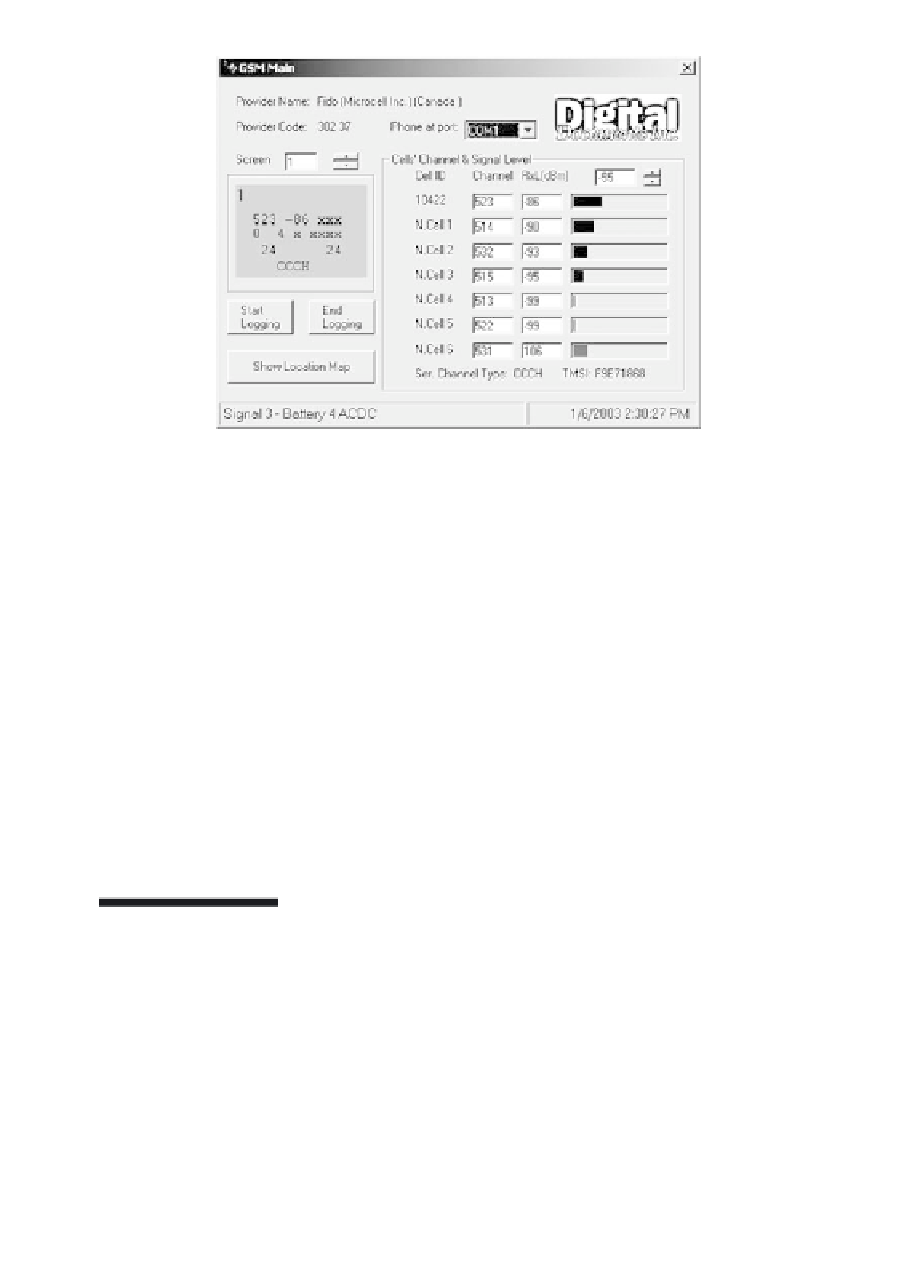Information Technology Reference
In-Depth Information
Figure 16.4
GSM cellular network data.
in respect to cellular location application system. Figure 16.4 shows cellular
network data communication software, which works on Nokia GSM phones
who is compatible with Nokia FBUS protocol, DAU-9P data cable. This appli-
cation software was developed by one of authors earlier.
On the server side, an optimal grouping, algorithm-based location server
agent will process the location data coming from a client agent with support
of the existing location information database. The server agent will eventu-
ally group the nearby mobile learners with other grouping criteria. Finally,
the grouping suggestion, inquiry, or automatic trigger will be sent to the
group's client agents to deliver and implement the online optimal grouping
service in the ubiquitous learning environment.
16.5 Learning Planner and Guidance System
This section focuses on the design of the learning path planner and the guid-
ance message generator in the framework. First of all, the operation flow of
the planner is described and is shown in Figure 16.5. Second, we design a
two-phase way to apply the planner into the informal ubiquitous learning
scenario, as Figure 16.6 shows. Figure 16.7 shows the flow of generating the
guidance message in this framework.
Before the planner is starting to plan routes for learners, domain experts
have to construct their own concept maps, which are so-called scaffolding
concept maps (the step 1 in Figure 16.5). Moreover, experts have to produce





